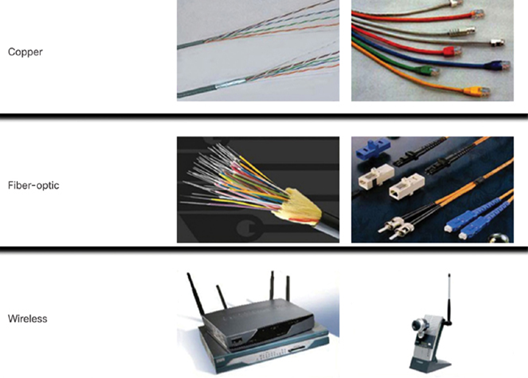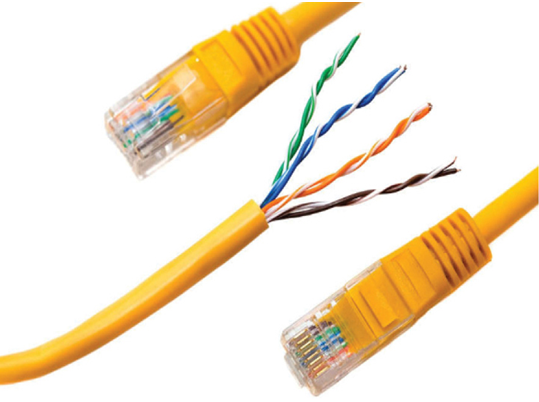Upon completion of this chapter, you will be able to answer the following question:
What are the common types of network cables?
This chapter uses the following key terms. You can find the definitions in the Glossary.
Kishori knows that the 15 to 20 devices in a patient’s room wirelessly connect to the network. She also uses a wireless tablet. While working at the nurses’ station, she noticed that the wireless network on her desktop computer was disabled. However, she still has access to patient records. How is the desktop connected?
How does communication transmit across a network? The answer is network media. Media provides a channel over which the message travels from source to destination. In modern networks, there are primarily three types of media used. Do you know what they are? Take this module to learn about media
Network media refers to the communication channels used to interconnect devices on a network. The communication channels can be wired or wireless.
Data is transmitted across a network on media. The media provides the channel over which the message travels from source to destination.
Modern networks primarily use three types of media to interconnect devices, as shown in Figure 6-1:
• Metal wires within cables – Data is encoded into electrical impulses.
• Glass or plastic fibers within cables (fiber-optic cable) – Data is encoded into pulses of light.
• Wireless transmission – Data is encoded via modulation of specific frequencies of electromagnetic waves.

Figure 6-1 Three Network Media Types
The four main criteria for choosing network media are these:
• What is the maximum distance that the media can successfully carry a signal?
• What is the environment in which the media will be installed?
• What is the amount of data and at what speed must it be transmitted?
• What is the cost of the media and installation?
The three most common network cables are twisted-pair, coaxial cable, and fiber-optic cable.
Ethernet technology generally uses twisted-pair cables to interconnect devices. Because Ethernet is the foundation for most local networks, twisted-pair is the most commonly encountered type of network cabling.
In twisted-pair, wires are grouped in pairs and twisted together to reduce interference. The pairs of wires are colored so that you can identify the same wire at each end. Typically, in each pair, one of the wires is a solid color and its partner is the same color striped onto a white background, as shown in Figure 6-2

Figure 6-2 An Example of a Twisted-Pair Cable
